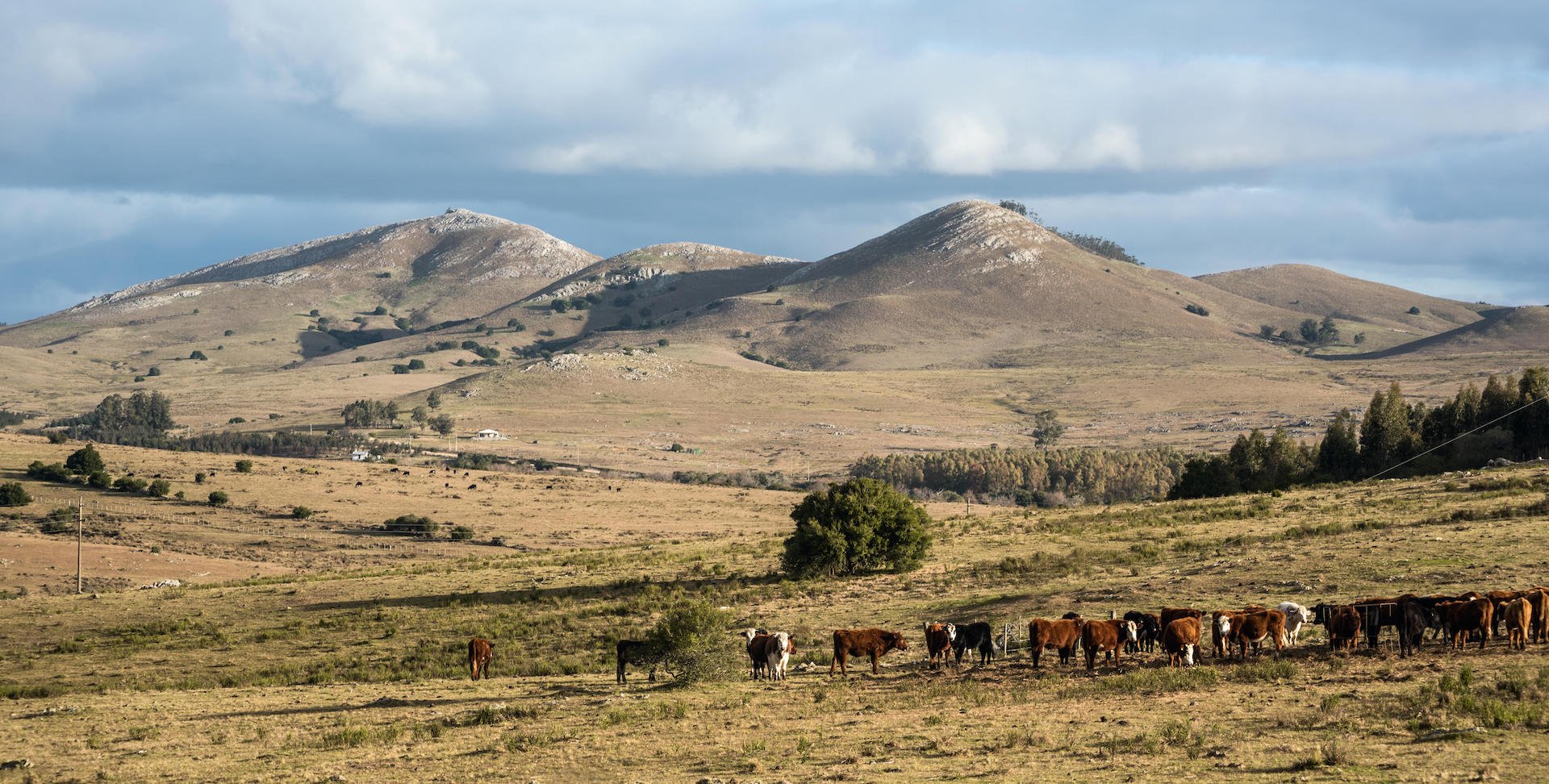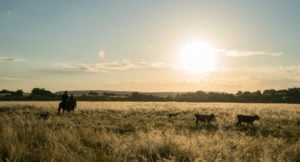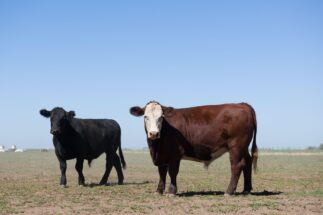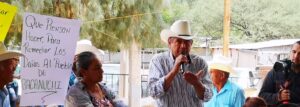In just 10 years, Uruguay could boost its estimated 600,000 tonnes of annual beef production by 30%, according to a new plan presented by the national government. It hopes to achieve the goal through the widespread use of a technique known as rotational grazing, which has the added benefit of avoiding major environmental impacts.
Uruguay has more than 11.5 million cows that graze across 80% of the country’s territory. It is estimated that each animal enjoys the equivalent of two football pitches of grassland. This means very extensive but also inefficient production as large parts of the pasture are not used by cattle, farming experts say.
The government of President Luis Lacalle Pou government is committed to converting the majority of producers to the rational or rotational grazing, whereby all cows are concentrated in herds and rotate through different plots of land. This fattens animals quicker and increases productivity.
Did you know…?
Cows outnumber people in Uruguay by a ratio of 3:1
“The animals eat all together in one field, leave their faeces and urine, and then move to another. This is what the herds originally did,” said Pablo Caputi, knowledge manager at Uruguay’s National Meat Institute of (INAC). “This allows the plots not to be overused and the pastures to degrade.”
Caputi is the author of INAC’s recently presented strategic plan, a 10-year roadmap for Uruguay’s beef industry. In it, the government claims it is possible to increase production through rotational grazing without generating more pollution.
The technique, developed in 1960 by French farmer Andre Voisin, posits that pastures must have enough time to recover between grazing periods in order to reach their full potential. Cows must move regularly from plot to plot, fertilising the soil with their waste.
“Rotational grazing allows you to have more calves per hectare and increase productivity. You generate more and better quality grass,” says Felipe Urioste, director of Pampa Oriental, an Uruguayan organisation that promotes holistic management of cattle and a local hub of the Savory Institute. “Everything in the government’s plan is what we have been proposing for years.”
Uruguay: A beef farming tradition
Produced in the open, free from hormones and antibiotics, Uruguayan meat has earned a prominent place among consumers around the world, especially in China. 70% of the meat produced is exported, of which China buys more than half. So far this year, shipments to China have grown by 53%.
For Uruguay, beef is part of its national identity and accounts for a large part of its economy. There are 48,000 cattle farms in the country, most of them family-run, producing traditional cattle breeds such as Hereford and Aberdeen Angus. The country has the highest per capita meat consumption in the world.
10%
of Uruguay's livestock is raised in feedlots, compared to around 70% in neighbouring Argentina
Of all livestock production in Uruguay, only 10% occurs in feedlots, enclosed fattening areas where cows feed on grains. The rest happens in the open air where cows are grass-fed, meaning lower energy consumption and a smaller carbon footprint.
Unlike neighbouring Latin American countries Brazil and Argentina, Uruguay does not have native forests, so the expansion of livestock has not caused deforestation. Cows coexist with a grassland ecosystem that consists of over 400 grass species.
All these attributes enable Uruguay to build a brand associated with caring for nature. Furthermore, the country has a mandatory traceability system, which assigns an identification code to each animal. The system allows each cow’s place in the production chain to be known in real time, enhancing food safety.
The challenge now, however, is to increase production and productivity, which has remained largely unchanged since 2004, hence INAC’s new plan. The strategy aims to increase Uruguay’s beef production without jeopardising the standards for which the country is widely recognised.
The plan focuses on the economic, social and environmental sustainability of cattle production in Uruguay. On the economic side, the aim is to have viable companies operate under market conditions. On the social side, it aims to generate more employment, and on the environmental side, to maintain biodiversity, make better use of water and improve the nutrient cycle in the soil.
“The government created a new ministry of environment, a sign that this agenda is important to us. Introducing new livestock practices such as rational grazing will allow us to capture more pollutant emissions,” says Caputi, adding; “we will also take better care of our soils and prevent soil erosion.”
Half of Uruguay’s greenhouse gas emissions come from livestock, according to the country’s emissions inventory. The government hopes that the better management of pastures, some of which are degraded, will allow more polluting gases to be captured. For Caputi, the country could soon even become carbon neutral.
A focus on China
For INAC, the relationship with China is a central part of its new strategic plan. Although Uruguay cannot compete in scale with countries such as Brazil or Argentina, the aim is to build its brand as a safer, more environmentally friendly beef and thus sell at a higher price.
E-commerce platforms are currently the main method of selling for Uruguayan beef in China and that is where INAC is focusing its efforts. A random search for “Uruguayan beef” on the most renowned Chinese sites, including, such as Tmall, Taobao and JD, returns hundreds of options for Uruguay’s different beef products.
Uruguay made contact with importers and distributors and has had a presenceat trade fairs, such as the recently organised Anufood. INAC also opened an office in China last year to provide support to exporting companies, in addition to promoting Uruguayan beef.
In online videos, Chinese celebrities claim that Uruguay’s beef is “safer” than that of Australia, which has a good reputation as a producer internationally but over the past year has been embroiled in trade and diplomatic rows with China. It is one of the main beef exporting countries to China alongside Argentina, Brazil and Uruguay.
Market research on the importance of traceability for Chinese consumers reveals that most value it as a way of ensuring food safety, although the concept needs to be strengthened among some groups.
A survey of 542 consumers in China’s northeastern Jilin Province found that consumers are very concerned about the current quality and safety of beef products, with 87.09% saying they would usually pay attention to beef quality and safety related information. However, the degree to which Chinese consumers care about traceability varies greatly according to income, level of education and region, surveys showed.
Daniel Castiglioni, a trader of Uruguayan beef in China, says the quality standards and traceability of Uruguayan beef matter to Chinese consumers.
“The demand for the product is there and if Uruguay were to produce more, it would have no problem selling it in China. The government has done a very good job of positioning itself in China and this has helped to differentiate Uruguayan meat from that exported by other countries. Consumers see it as sustainable,” he said.
For Urioste, Uruguay has to transform itself into a “boutique” beef country and for that it must bet even more on China. The growth of purchasing power in the Asian country will lead to greater demand for value-added meat, perhaps even that with negative emissions.
Uruguay’s growing sales of beef to China reflect the current strong relations between the two countries, which have a strategic partnership agreement in place since 2016. Uruguay was the first country in South American trade bloc Mercosur to join China’s Belt and Road initiative, which its neighbours have yet to formally endorse.









